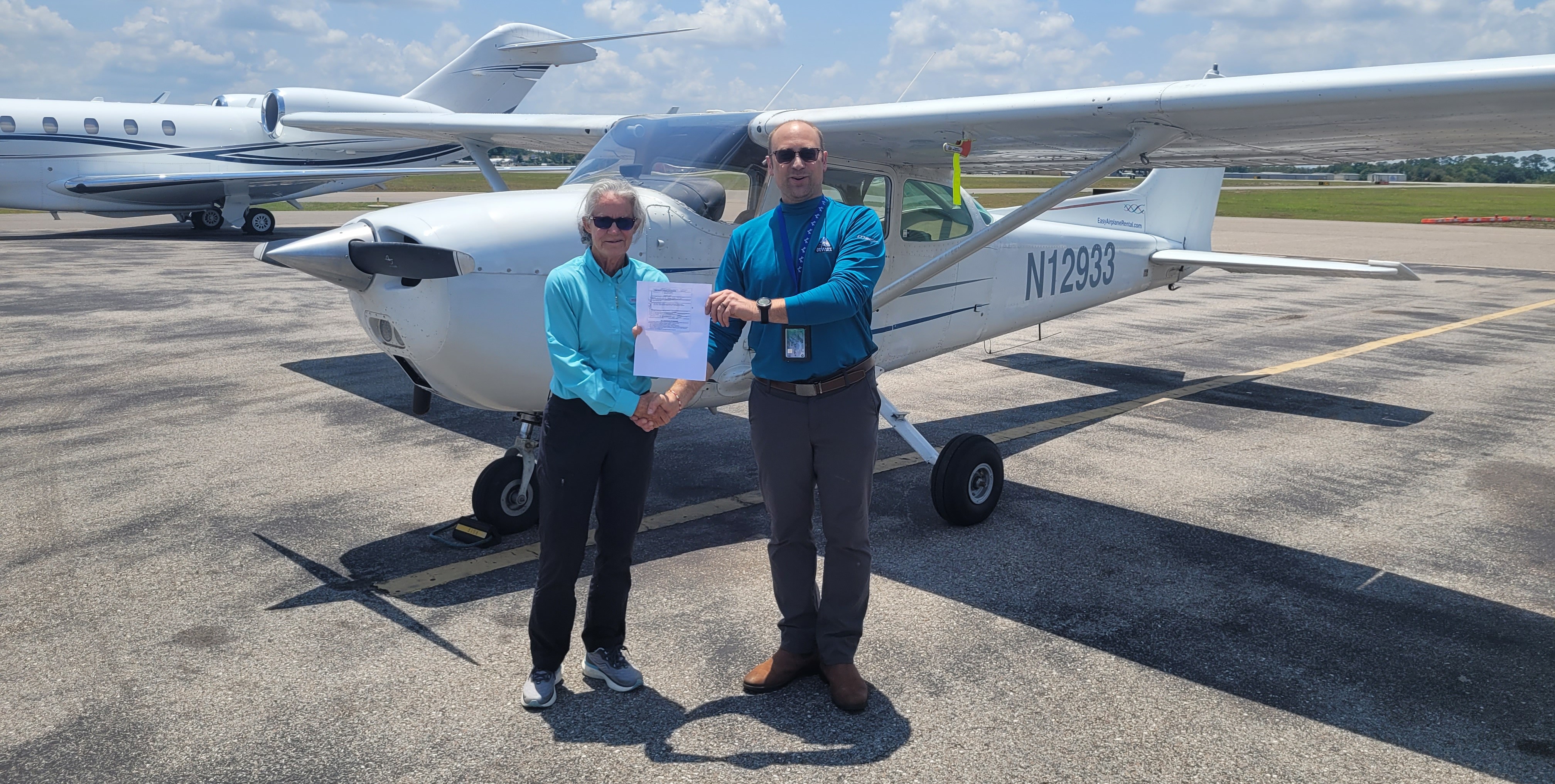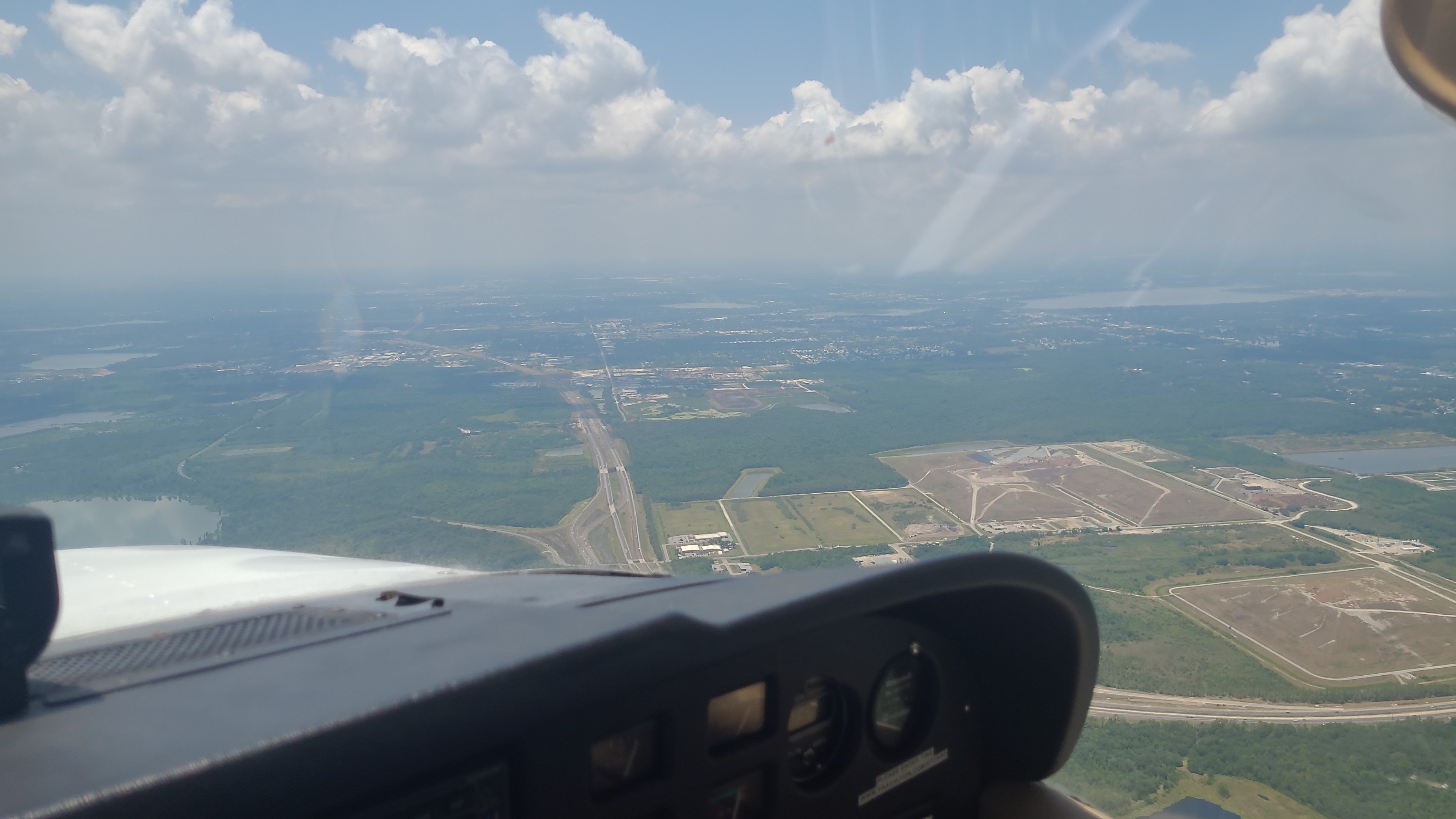Above: An ariel view outside a plane
By Mark Ladwig (other contributors: Melissa Sellevaag (LICSW) of the Wendt Center, pilot Andrew Beale, Cate S. Riihimaki (LPC) and Caroline Silby, Ph.D., CMPC)
As far back as I can remember, I’ve loved figure skating and flying in planes. Both give me the incredible feeling of gliding freely.
For figure skaters, flying in airplanes is almost part of the sport — whether for competitions, test sessions, or training seminars. With the recent tragedy of American Airlines Flight 5342 and other incidents, there’s a heightened focus on air travel and I find myself part of two communities —skating and aviation — processing these events together while expressing deep sympathy and support for the loss of community members and loved ones.
What occurred on Jan. 29, 2025, has left a permanent scar on the figure skating community, while causing some to experience flight anxiety.
Please know that if you are experiencing a heightened fear of flying, this is a normal reaction to an extremely abnormal event. Exposure to news about airplane crashes can contribute to the fear, even if it's not a personal experience.
Several surveys suggest that even in the best times, 40 percent of Americans harbor some fear of air travel.

Individuals with pre-existing anxiety disorders may be more prone to developing a fear of flying. Learned behaviors can contribute to flight anxiety. If a parent or close family member has a fear of flying, it can be learned through observation and mimicry. Fear of flying can sometimes be associated with other phobias, such as fear of heights or fear of falling.
In this story, I’ll share some of my positive experiences in aviation and offer tips to help you feel more comfortable when you fly. Before I get started, it’s important to understand that while 2025 has seen an upward surge in aviation accidents/incidents, U.S. commercial aviation is exceptionally safe. Major U.S. commercial airlines reported no onboard fatalities in 2023, according to the National Safety Council. Injury and death rates in U.S. air travel, according to USA Facts, have been almost zero per 100 million passenger miles traveled since 2002, and the number of aviation accidents declined from 2000 to 2022.
I’ve always thought flying and skating share a lot in common. Pilots are perfectionists, just like skaters. Everyone’s goal is to “nail the landing.” Airports are like ice rinks — fixed locations, but each with its own personality. While every rink has dasher boards, the corners, color schemes, and even the ice itself vary. Similarly, airports all have runways, but they’re different in length, layout and lighting, each with its own character.
Airports and airlines also have “flying coaches,” officially called Certified Flight Instructors (CFIs) by the Federal Aviation Administration. These CFIs work with and train pilots to sharpen their skills and ultimately to keep everyone safe. Since I retired from competitive skating, I’ve been working — outside of my day job — toward becoming a pilot myself, with the ultimate goal of becoming a CFII. And last month, I did it!
Preparing for the coaching certification/test felt like training to land a double Axel under pressure. I had to master a flying maneuver called a “power-off 180.” It’s a skill that requires pilots to simulate a highly unlikely situation of an engine-out landing, from about 1,000 feet above the ground and touch down within 200 feet of a designated point on the runway — and on the runway’s centerline. Just as with a double Axel, it demands precision, balance, experience and mastery of foundational skills. One has to manage air speed, descent and your path, all the while aligning perfectly with the runway. It’s definitely not for beginners and takes a lot of practice, usually with the guidance of a good coach — or in flying, a CFI.
Good figure skating coaches and aviation CFIs help us grow, refine our skills, and always prioritize safety. From my Learn to Skate days to the world stage, the skating community showed me a culture rooted deeply in safety — and so too have my aviation peers.
As you continue boarding airplanes and traveling, I want you to know that pilots, flight attendants and everyone involved in your journey are focused on keeping you safe. In the U.S. alone, there are more than 10 million flights each year, carrying more than 900 million passengers. Statistically, flying is far safer than driving to the airport. The aviation community — like the skating community — is filled with caring, safety-focused professionals who want to get home to their loved ones, just like you do.
If you're feeling uneasy about flying, here are a few simple suggestions to quell your nerves.
Meet the pilots: Arrive early and talk to the gate agent — ask if you can meet the pilots. Board early with your group and see if a flight attendant can arrange a quick visit to the flight deck. I’ve seen many travelers feel a lot better after a brief chat with the pilots.
Learn about the flight process: Planes make a lot of noises that might seem strange if you’re not used to them, but they’re completely normal. For example, the flaps extending and the landing gear locking are signs that everything is working as it should. Flight crews are trained to catch even the smallest issue. If you’re ever concerned during the flight, press the call button and ask. Just remember, before landing, flight attendants need to be buckled in, too. If you still have questions, feel free to ask after deplaning.
Prepare your strategies: Prepare to have your favorite audiobook, playlist, or podcast downloaded to play and/or explore the use of strategies like deep breathing, guided meditation and grounding exercises.
Communicate with the crew: Let the gate agent and/or flight attendants know that you are feeling anxious. They are trained to help and sometimes knowing someone understands and is able to assist can make all the difference.
Avoid stimulants: Caffeine and sugary snacks can increase feelings of anxiety — opt for water and light, healthy snacks instead.
No matter where your skating travels take you, I hope you are able to experience and connect with enthusiastic, caring, safety-focused professionals who are a part of your skating and aviation communities.
Mark Ladwig competed in the 2010 Olympics in pairs. He has been involved in U.S. Figure Skating leadership, while working in the skating industry with Jackson Ultima. He recently became a certified flight instructor with instrument rating.



